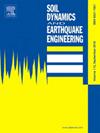Onsite intensity prediction for earthquake early warning with multimodal deep learning
IF 4.2
2区 工程技术
Q1 ENGINEERING, GEOLOGICAL
引用次数: 0
Abstract
Rapid and accurate prediction of onsite intensity is essential for evaluating earthquake damage to the ground and buildings in earthquake early warning (EEW). Some scholars have used a single feature (such as peak displacement) extracted from the P-wave to establish onsite intensity prediction equations or employ single-mode data (such as seismic waves) to establish machine learning prediction models. However, accurately predicting onsite intensity using one type of data and limited information is difficult. To effectively utilize the information within data of different modalities and improve the reliability of onsite intensity prediction, using earthquake events collected from the Japanese K-NET network, we propose the Multimodal Onsite Intensity Predictor (MOIPor) based on deep learning for EEW and explore the feasibility of MOIPor for onsite intensity prediction in the region of Japan. MOIPor extracts features from three different multimodal data, namely, time-domain data, spectrum data, and text data, obtained from a single station and then uses feature fusion and a multilayer perceptron to output the predicted onsite intensity. The results show that when data from 3 s after the P-wave arrival are used in the test dataset, the reliability of the onsite intensity prediction of MOIPor is greater than that of baseline models. Moreover, we applied MOIPor to the 2021 M7.3 earthquake sequence along the coast of Fukushima in Japan for offline testing, and within 5 s after P-wave arrival, the accuracy of successful alarms based on the intensity predicted by MOIPor exceeded 90 %, with no false alarms. We infer from the results that MOIPor can predict onsite intensity for EEW quickly and reliably in the Japanese region.
求助全文
约1分钟内获得全文
求助全文
来源期刊

Soil Dynamics and Earthquake Engineering
工程技术-地球科学综合
CiteScore
7.50
自引率
15.00%
发文量
446
审稿时长
8 months
期刊介绍:
The journal aims to encourage and enhance the role of mechanics and other disciplines as they relate to earthquake engineering by providing opportunities for the publication of the work of applied mathematicians, engineers and other applied scientists involved in solving problems closely related to the field of earthquake engineering and geotechnical earthquake engineering.
Emphasis is placed on new concepts and techniques, but case histories will also be published if they enhance the presentation and understanding of new technical concepts.
 求助内容:
求助内容: 应助结果提醒方式:
应助结果提醒方式:


